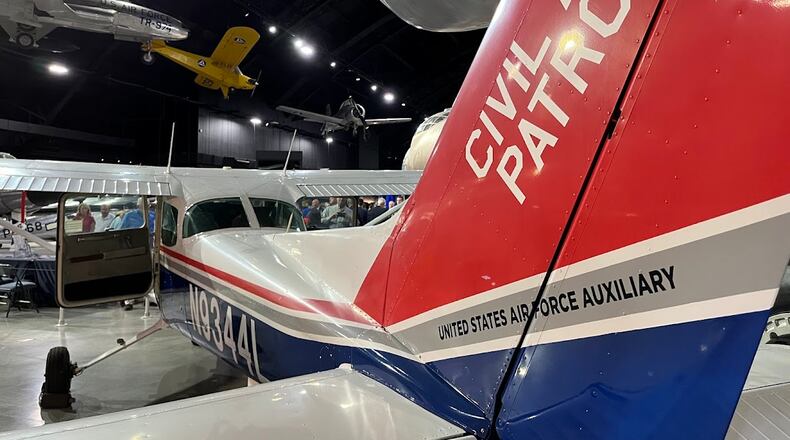After the Federal Aviation Administration shut down civilian air travel on the morning of Sept. 11, the Cessna was one of the few civilian craft given permission to fly. It was the only civilian airplane flying over Manhattan on 9/12.
“You own the skies,” Civil Air Patrol (CAP) member Warren Ratis, then a CAP captain and front seat photographer who flew on 9/12, recalled an air traffic controller telling him and two fellow crew members.
Ratis described flying over an idle JFK International Airport on lower Long Island.
Once over Manhattan, as the Cessna flew barely 1,000 feet above the ruins, he recalled being amazed at how empty the urban vistas were.
“I looked down, and it was eerie because you couldn’t see a mouse,” Ratis said.
The photographs Ratis and his crew took helped prepare for the Sept. 14 visit of President Bush to what became known as “Ground Zero.”
The photos also helped investigators identify remains of the Boeing 767 cockpits, which led to identification of the hijackers, said Maj. Gen. Regena Aye, CAP national commander and chief executive.
Aye thanked the CAP members who served on Sept. 12, and recognized the patrol’s overall contributions. As members of the Air Force’s federally chartered civilian auxiliary, CAP volunteers assist in search-and-rescue missions, educate young pilots and support the Air Force and state and local governments in various ways.
“We had the right crew at the right time,” Aye said of the 9/12 flight.
Nationwide, CAP volunteers also transported blood and medical supplies, provided communication and transportation support and helped state and federal officials, museum curators noted.
Like Ratis, Sept. 12 crew member Andrew Feldman, (also a CAP captain in 2001), was grateful for the acknowledgment of the museum crowd, which applauded both men at least twice.
“We flew the mission, and it was a mission,” Feldman said after the public portion of the museum ceremony was over. “I never expected this kind of thank you.”
The Cessna is on display in the museum’s Cold War Gallery, and a new exhibit with artifacts from CAP’s support of the 9/11 response will be open.
About the Author



